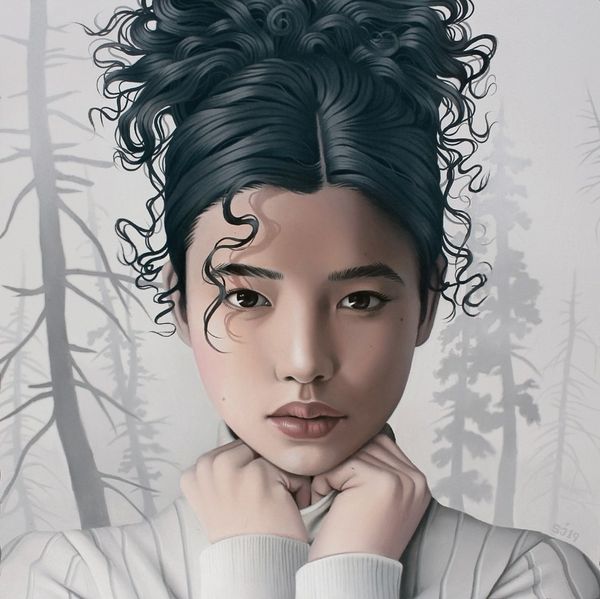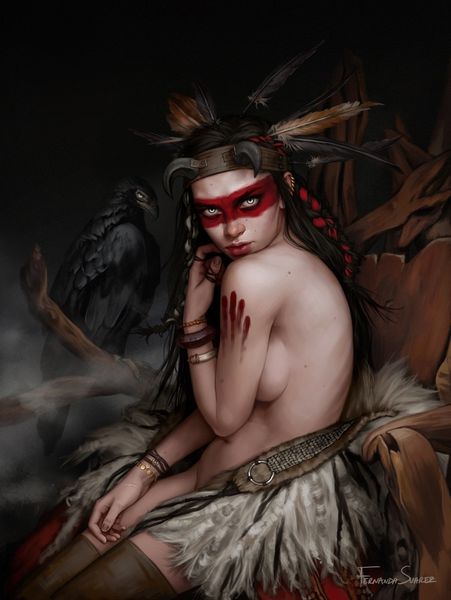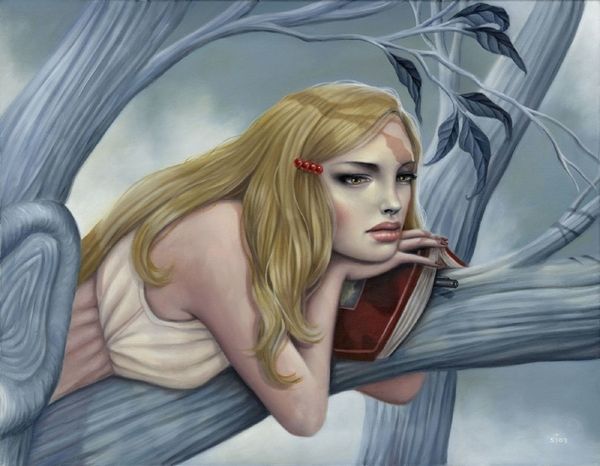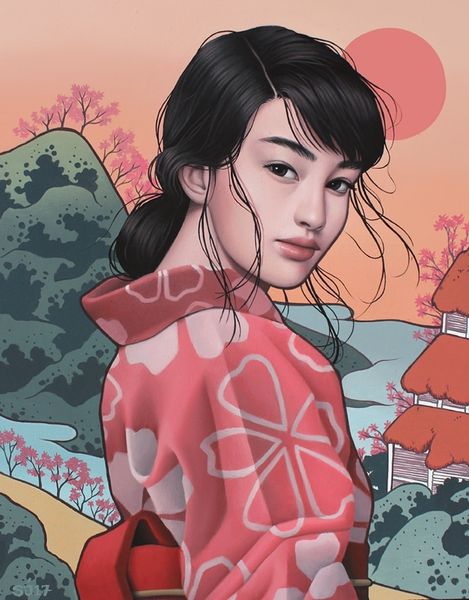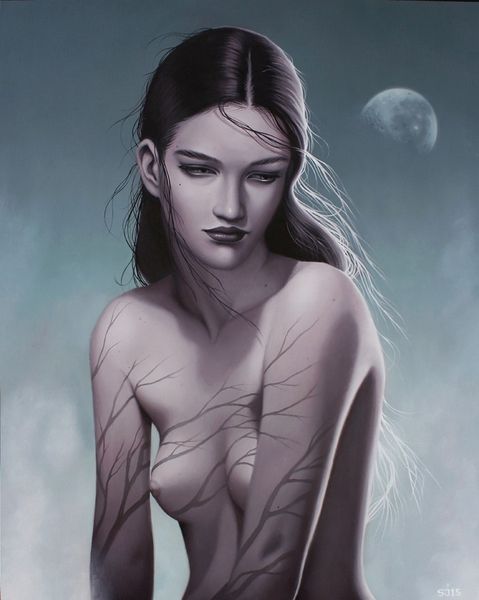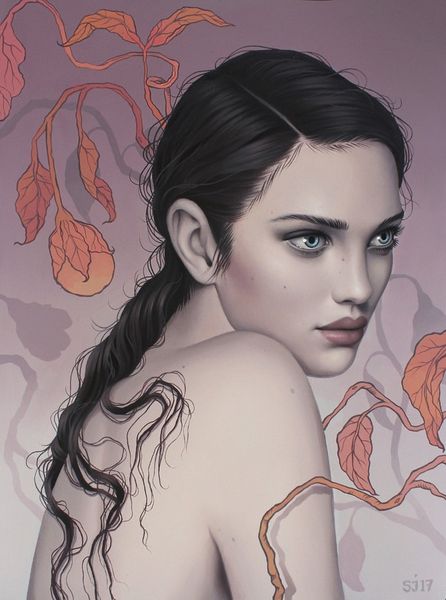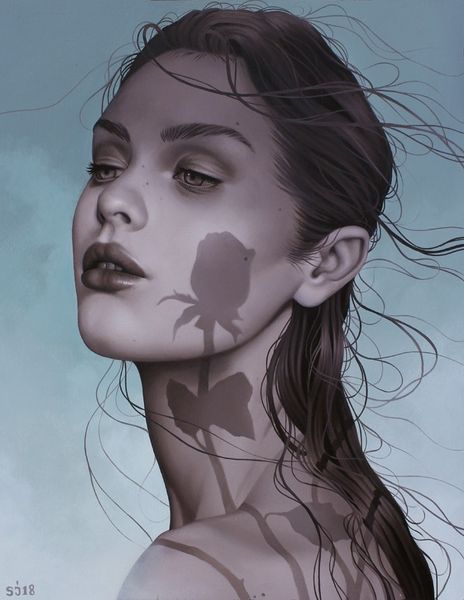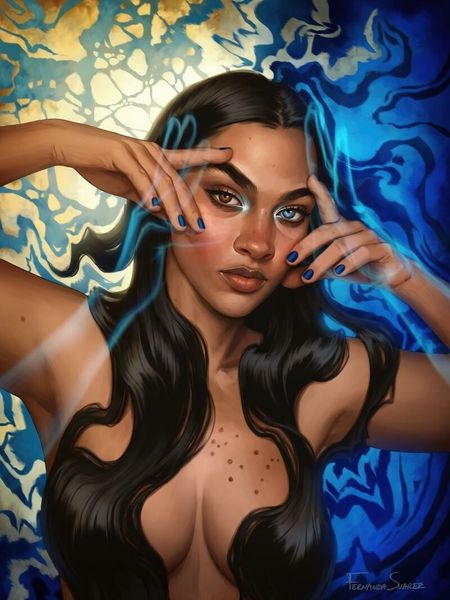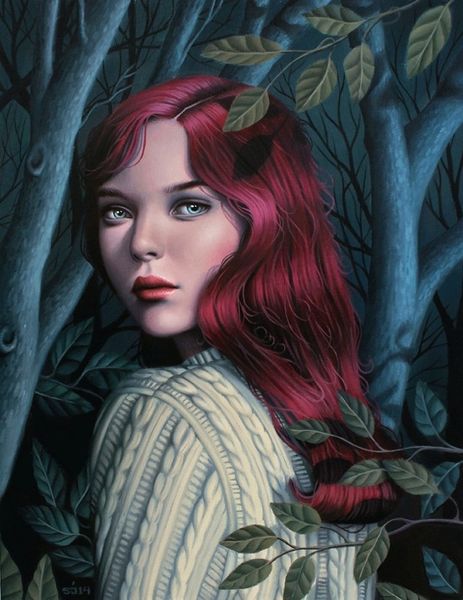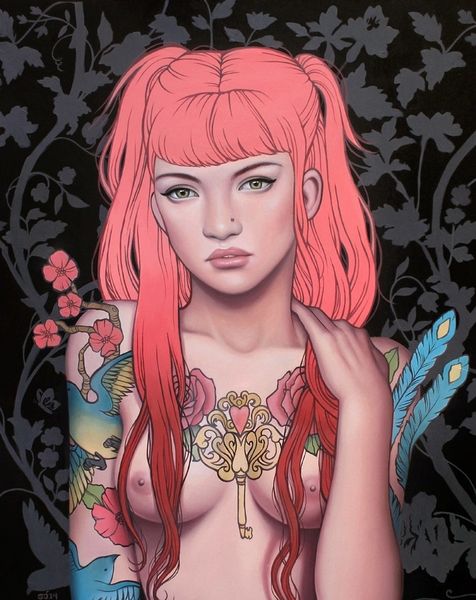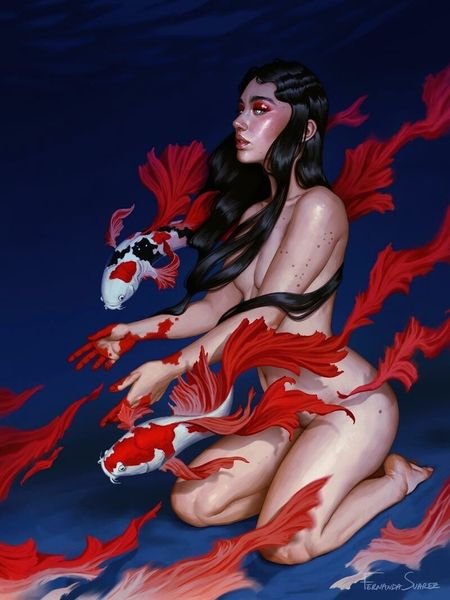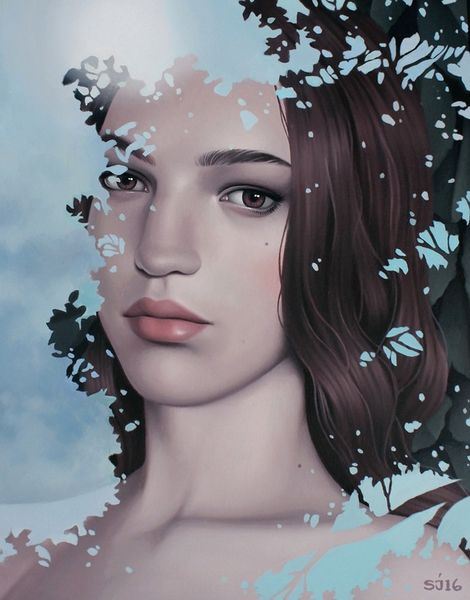
painting, acrylic-paint
#
portrait
#
figurative
#
contemporary
#
painting
#
landscape
#
caricature
#
acrylic-paint
#
figuration
#
portrait art
Copyright: Modern Artists: Artvee
Curator: At first glance, I’m struck by how serene yet powerful this painting feels. The muted palette combined with the sharp angles of her face paint create a captivating tension. Editor: This is Sarah Joncas’ “Princess Mononoke”, a contemporary acrylic painting on panel. Joncas often reimagines characters from pop culture and art history, bringing them into dialogue with present-day portraiture. Curator: Ah, that explains it. I sense echoes of traditional portraiture but also a very modern sensibility in the subject’s gaze. Tell me, what does Mononoke signify within Japanese folklore, or in its popular rendering through Studio Ghibli? Editor: “Mononoke,” at its root, translates roughly to “spirit” or “monster." Within Miyazaki’s film, Princess Mononoke embodies humanity’s complex relationship with nature—a furious protector of the forest, yet also deeply connected to the human world. She becomes a symbol of the painful clash between industrial progress and environmental preservation. Curator: That dynamic is beautifully captured here. The triangular face markings could be interpreted as both war paint, indicating her warrior spirit, but also resemble stylized animal features; mirroring the deep-seated duality present in many Indigenous narratives. I’m curious, are the character’s Japanese facial characteristics intentional? What’s the effect on her Western audiences? Editor: Absolutely intentional, I think. Joncas is navigating this terrain deftly. She invites viewers to reconsider representations of cultural narratives through the lens of anime fandom and Western portraiture. By imbuing the figure with tangible, recognizable features of Japanese ethnic identity, she confronts historical erasures and exclusions within Western art. In art history, there’s a fraught line that contemporary art has to grapple with and this particular choice highlights what Mononoke has become to international viewers. Curator: Very insightful. I’m also intrigued by the details: the raw texture of her fur garment, the jagged points of the tooth necklace. They feel ancient, almost ritualistic, but the smooth rendering of her skin pulls it back to the contemporary. It also suggests a dialogue across mediums; an illustration style referencing manga combined with painted elements. Editor: The material contrasts—the rough fur against the smoothness of her skin, for instance—create a tangible push-and-pull that speaks to that very conflict: old and new, human and wild. Curator: It’s this interplay that truly elevates the painting beyond a simple portrait. I think Joncas taps into something primal and deeply relevant to our times. Editor: Yes, and the continued fascination with characters like Princess Mononoke underlines how universal these themes are. They are timeless narratives with contemporary implications.
Comments
No comments
Be the first to comment and join the conversation on the ultimate creative platform.
